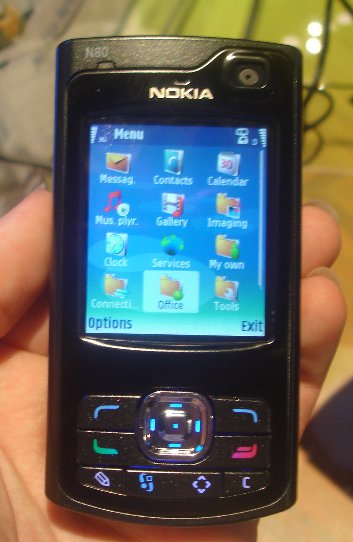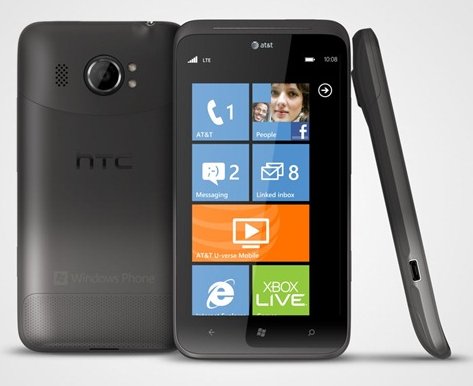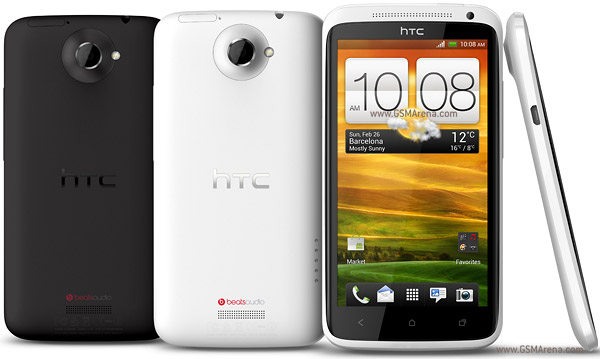In part 1 of this saga, we had travelled from the humble 6233 to the flagship-lite N82. So far it had been a journey full of gradually dawning understanding, and slowly rising wonder and awe. Then the iPhone happened and Nokia was caught in the headlights.
You see, the iPhone launched in 2007 and despite the hype and the hoopla, it had very little to offer to existing NSeries owners like me, since it lacked many key features. But it did introduce touchscreen phones in a big way, and everybody saw sense in it.
Nokia's answer: the 'Tube'.

Yes, this is the iconic Nokia 5800 XpressMusic. This was Nokia's answer to the iPhone and caused great excitement in the masses, including me. I bought it before it was officially launched in Pakistan, at a price which would these days fetch me a Samsung Galaxy Nexus AND a Nokia Asha 303. Yes, you read that right - I was desperate enough for it to have bought it in the black.
And truth be told, the set had everything - Wifi, great music capabilities, good user interface, TV out, etc. I liked the S60 5th edition, and at that point in time, Android hadn't taken off and Apple's iOS was the only other touch interface available (there was Sony Ericsson's UIQ but it was just another variation of Symbian). All was fine and dandy until this happened:

The N97. The ultimate super-uber-ultra phone that was meant to kill everything. Amazing construction. Latest touchscreen UI. Great hardware keyboard. 3.5-inch nHD screen. 32 GB built in memory AND an SD slot. 5 MP camera. In June of 2008, you couldn't go much higher end than this.
With all this, it might come as a shock when I tell you that the N97, hands down, is the WORST gadget I have ever used. The reason? A little something called the 'C: drive'. You see, most phones even these days have a root directory which is variously called 'C drive' or 'internal memory'. In the N97, the C drive was used to store contacts, messages, web browsing caches and Nokia apps (the latter couldn't be shifted to the SD card). Nokia chose to allocate a grand total of 50 MB to the drive. See the problem? Every update, every web browsing session, every download filled up the C Drive and it started giving an error message. There was no solution except to clean up the browser cache.
Every. Single. Fucking. Time.
Quite how Nokia's internal QC and testing procedures allowed this to happen speaks volumes about how Nokia was at that time: arrogant, out of sync with the web culture, lax in standards. This not being Android, there was no easy way to hack the device and tell it to store the damned data elsewhere.
Luckily, the Nokia N900 launched at the same time and I went out to exchange my N97 in a hurry.

See that screen? That was the N900 multitasking screen and I have't seen a better implementation anywhere else. The N900 was a revelation: all the high points from the N97 hardware had been retained, albeit with a better design, memory management, and a vastly superior OS that brought true desktop-like experience with elegance and flexibility. It also provided another groundbreaking innovation: a unified contacts and messages list that listed IMs and SMSs from anyone in the same threaded view.
It did have its limitations. Not a lot of apps were made for the Maemo 5, and the phone only worked in landscape. This landscape limitation was promised to be fixed by Nokia by end of 2009. The fix never came. As good as N900 was, I couldn't live with this long, and traded it in for HTC Legend.
So that's how the divorce was: quiet, unexpected but distressing. Because trading in the N900 meant I was giving up on Nokia for good. It still pains me to this day, since I still remember the build quality and industrial design of the N900 and cannot find a match in current offerings.
If you can see a pattern here, it is that Nokia itself refused to address problems with its devices and let too many devices out the door with crippling defects. Their current troubles and the inexorable march to bankruptcy is, I feel, justice served for a lot of users like me who were swindled out of our hard earned cash in the latter years.
You see, the iPhone launched in 2007 and despite the hype and the hoopla, it had very little to offer to existing NSeries owners like me, since it lacked many key features. But it did introduce touchscreen phones in a big way, and everybody saw sense in it.
Nokia's answer: the 'Tube'.

Yes, this is the iconic Nokia 5800 XpressMusic. This was Nokia's answer to the iPhone and caused great excitement in the masses, including me. I bought it before it was officially launched in Pakistan, at a price which would these days fetch me a Samsung Galaxy Nexus AND a Nokia Asha 303. Yes, you read that right - I was desperate enough for it to have bought it in the black.
And truth be told, the set had everything - Wifi, great music capabilities, good user interface, TV out, etc. I liked the S60 5th edition, and at that point in time, Android hadn't taken off and Apple's iOS was the only other touch interface available (there was Sony Ericsson's UIQ but it was just another variation of Symbian). All was fine and dandy until this happened:

The N97. The ultimate super-uber-ultra phone that was meant to kill everything. Amazing construction. Latest touchscreen UI. Great hardware keyboard. 3.5-inch nHD screen. 32 GB built in memory AND an SD slot. 5 MP camera. In June of 2008, you couldn't go much higher end than this.
With all this, it might come as a shock when I tell you that the N97, hands down, is the WORST gadget I have ever used. The reason? A little something called the 'C: drive'. You see, most phones even these days have a root directory which is variously called 'C drive' or 'internal memory'. In the N97, the C drive was used to store contacts, messages, web browsing caches and Nokia apps (the latter couldn't be shifted to the SD card). Nokia chose to allocate a grand total of 50 MB to the drive. See the problem? Every update, every web browsing session, every download filled up the C Drive and it started giving an error message. There was no solution except to clean up the browser cache.
Every. Single. Fucking. Time.
Quite how Nokia's internal QC and testing procedures allowed this to happen speaks volumes about how Nokia was at that time: arrogant, out of sync with the web culture, lax in standards. This not being Android, there was no easy way to hack the device and tell it to store the damned data elsewhere.
Luckily, the Nokia N900 launched at the same time and I went out to exchange my N97 in a hurry.

See that screen? That was the N900 multitasking screen and I have't seen a better implementation anywhere else. The N900 was a revelation: all the high points from the N97 hardware had been retained, albeit with a better design, memory management, and a vastly superior OS that brought true desktop-like experience with elegance and flexibility. It also provided another groundbreaking innovation: a unified contacts and messages list that listed IMs and SMSs from anyone in the same threaded view.
It did have its limitations. Not a lot of apps were made for the Maemo 5, and the phone only worked in landscape. This landscape limitation was promised to be fixed by Nokia by end of 2009. The fix never came. As good as N900 was, I couldn't live with this long, and traded it in for HTC Legend.
So that's how the divorce was: quiet, unexpected but distressing. Because trading in the N900 meant I was giving up on Nokia for good. It still pains me to this day, since I still remember the build quality and industrial design of the N900 and cannot find a match in current offerings.
If you can see a pattern here, it is that Nokia itself refused to address problems with its devices and let too many devices out the door with crippling defects. Their current troubles and the inexorable march to bankruptcy is, I feel, justice served for a lot of users like me who were swindled out of our hard earned cash in the latter years.







 ]
]


